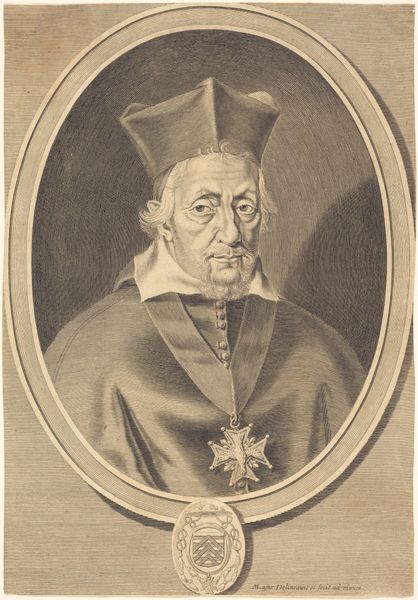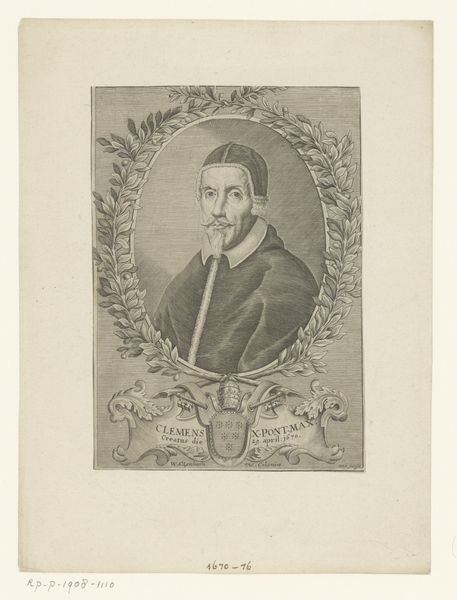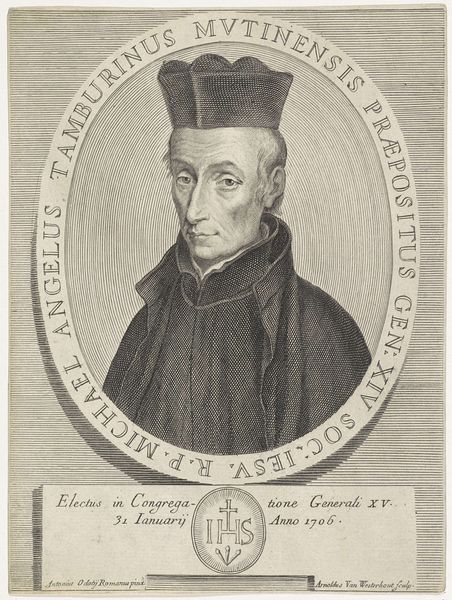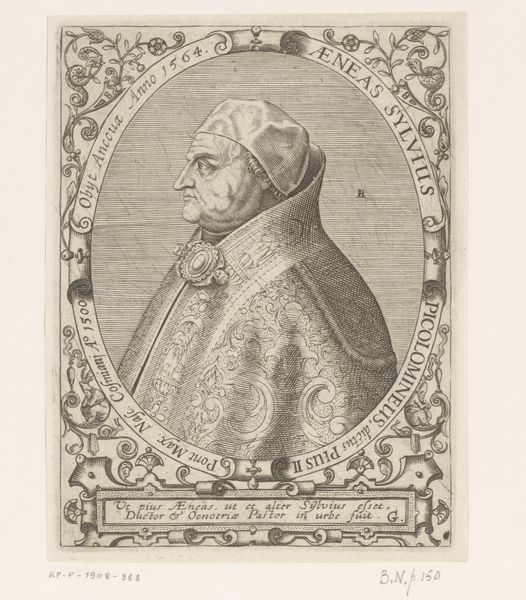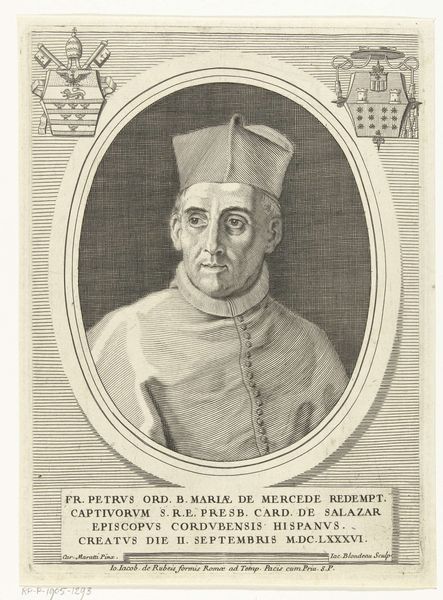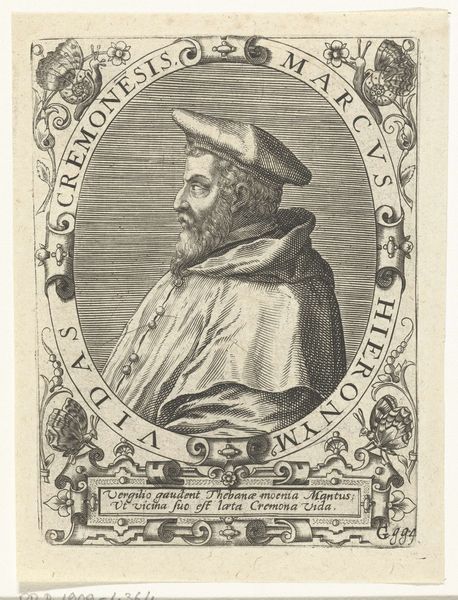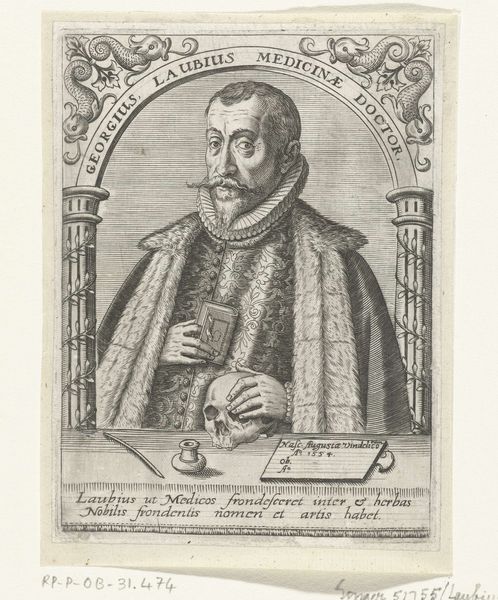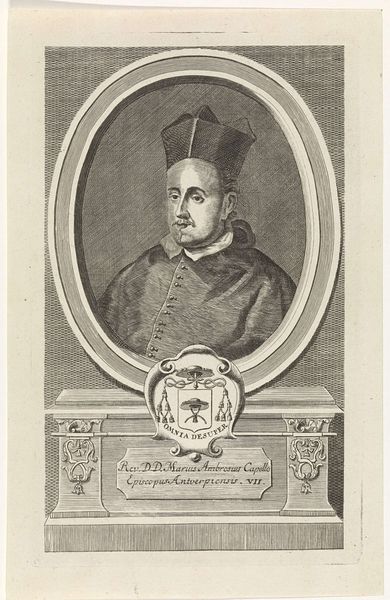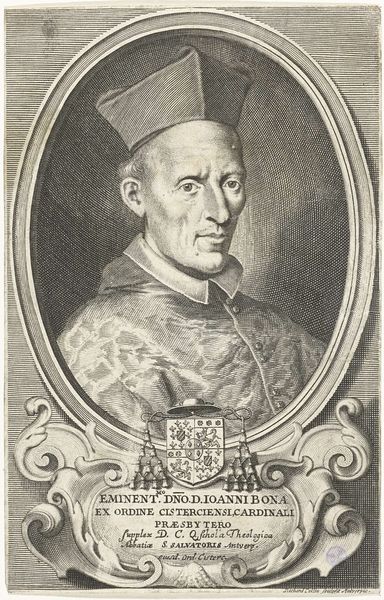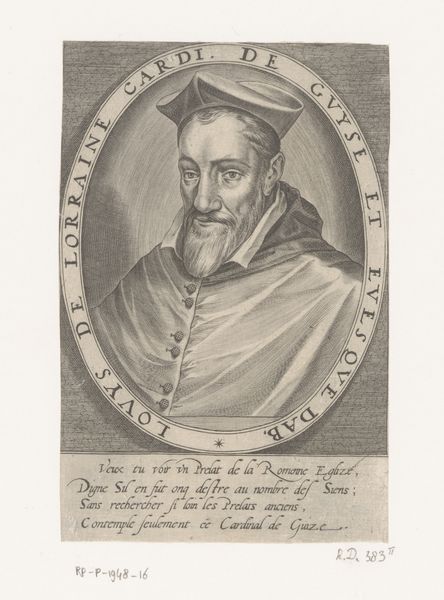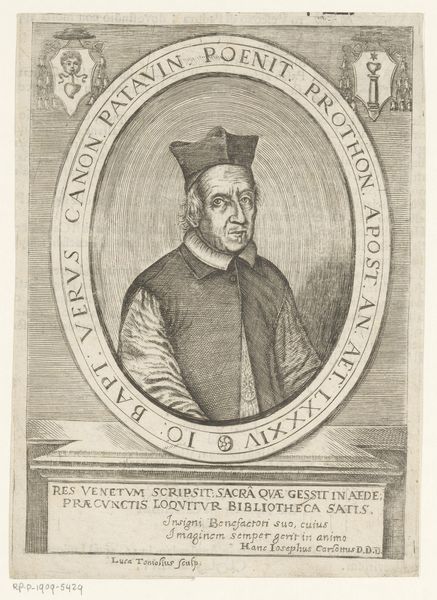
print, engraving
#
portrait
#
aged paper
#
baroque
# print
#
old engraving style
#
history-painting
#
engraving
Dimensions: height 146 mm, width 96 mm
Copyright: Rijks Museum: Open Domain
Curator: At first glance, there's a certain severity in this portrait. It's not just the formality, but something in the direct gaze and the meticulous lines that carve out the face. Editor: Absolutely. Let's take a closer look at "Portret van Paus Benedictus XIII," an engraving by Christian Fritzsch, believed to have been created between 1724 and 1730. It’s part of the Rijksmuseum's collection. Curator: Fritzsch has rendered Benedictus with such unwavering detail, it feels almost sculptural, wouldn't you agree? The face is quite fleshy but it has been translated into a sharp precise two-dimensionality. Even the folds in his robes are so precise. Editor: That precision speaks to the power of symbols. Think of the papal robes—each layer and ornament signifies centuries of tradition and authority. And below the portrait, there's his coat of arms, anchoring the man to his lineage. Those visual cues are everything in baroque iconography. Curator: He is a curious paradox: softness in the cheeks and the jowls versus those unflinching eyes that suggest the opposite: strength and rigor. Does the symbolic language help to soften him? Is it too harsh alone? Editor: Perhaps it aims to present a balanced figure: the spiritual leader and the man, authority and accessibility. This interplay of symbols reveals how the Church carefully constructed its image, ensuring continuity and reinforcing its narrative across time. Curator: There's a compelling tension between the human vulnerability captured in his features and the timeless message conveyed through symbols, doesn't it? It makes you think about legacy. Editor: Indeed. Ultimately, this portrait is more than just an image of a man; it's a window into how institutions immortalize themselves through art and symbol, projecting power, continuity, and, most importantly, memory.
Comments
No comments
Be the first to comment and join the conversation on the ultimate creative platform.
